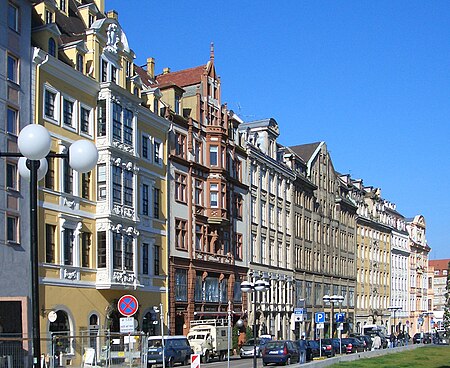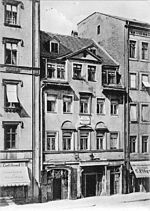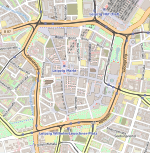Katharinenstrasse
Streets in Leipzig

Katharinenstrasse (in English: Catherine Street) is a street in the north of the central quarter inside the Inner City Ring Road of Leipzig, Germany. It runs slightly curved in a north–south direction between Markt and Brühl. Its length is 199 m (652.9 ft). The name goes back to a former chapel at the northern end of the street which was mentioned 1240. The point de vue to the south is the tower of the Old Town Hall.
Excerpt from the Wikipedia article Katharinenstrasse (License: CC BY-SA 3.0, Authors, Images).Katharinenstrasse
Katharinenstraße, Leipzig center (Mitte)
Geographical coordinates (GPS) Address Nearby Places Show on map
Geographical coordinates (GPS)
| Latitude | Longitude |
|---|---|
| N 51.34219 ° | E 12.374955 ° |
Address
Katharinenstraße 13
04109 Leipzig, center (Mitte)
Saxony, Germany
Open on Google Maps










